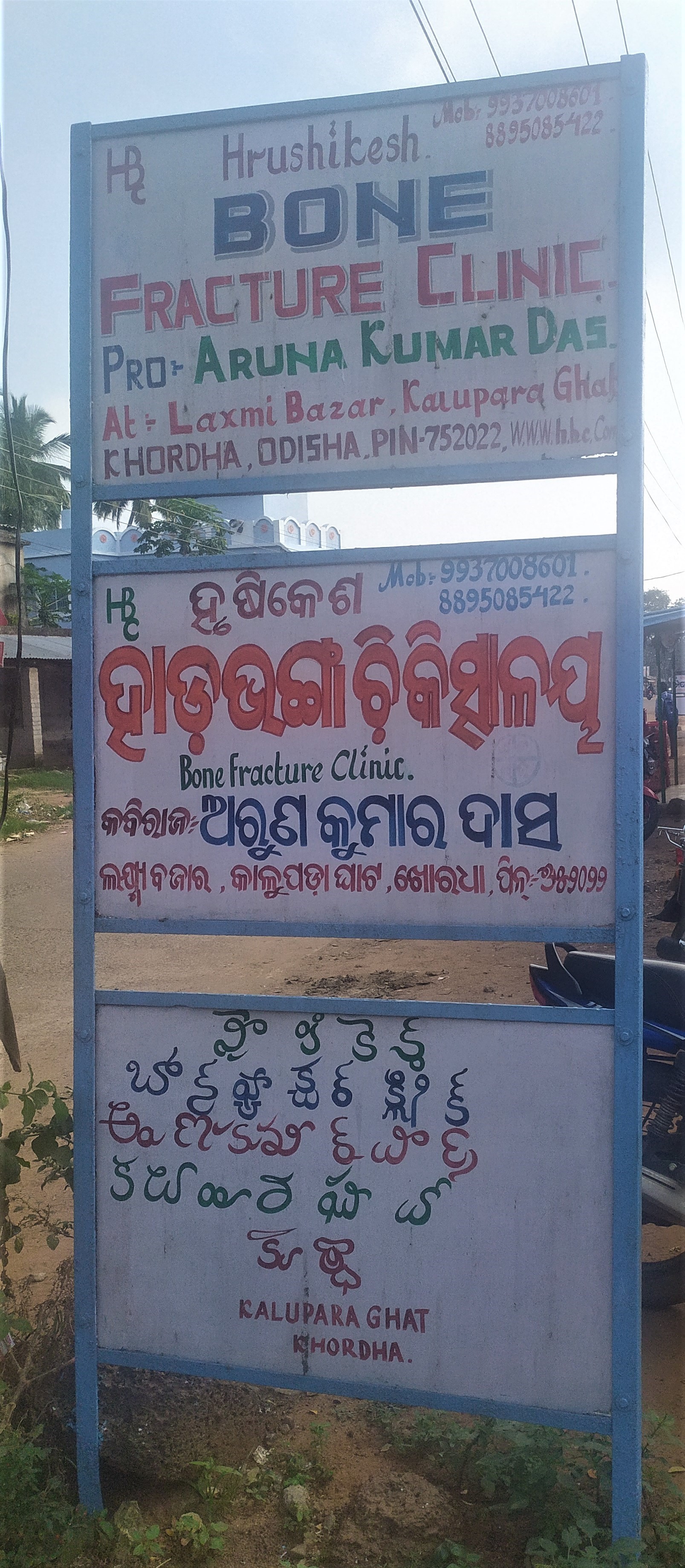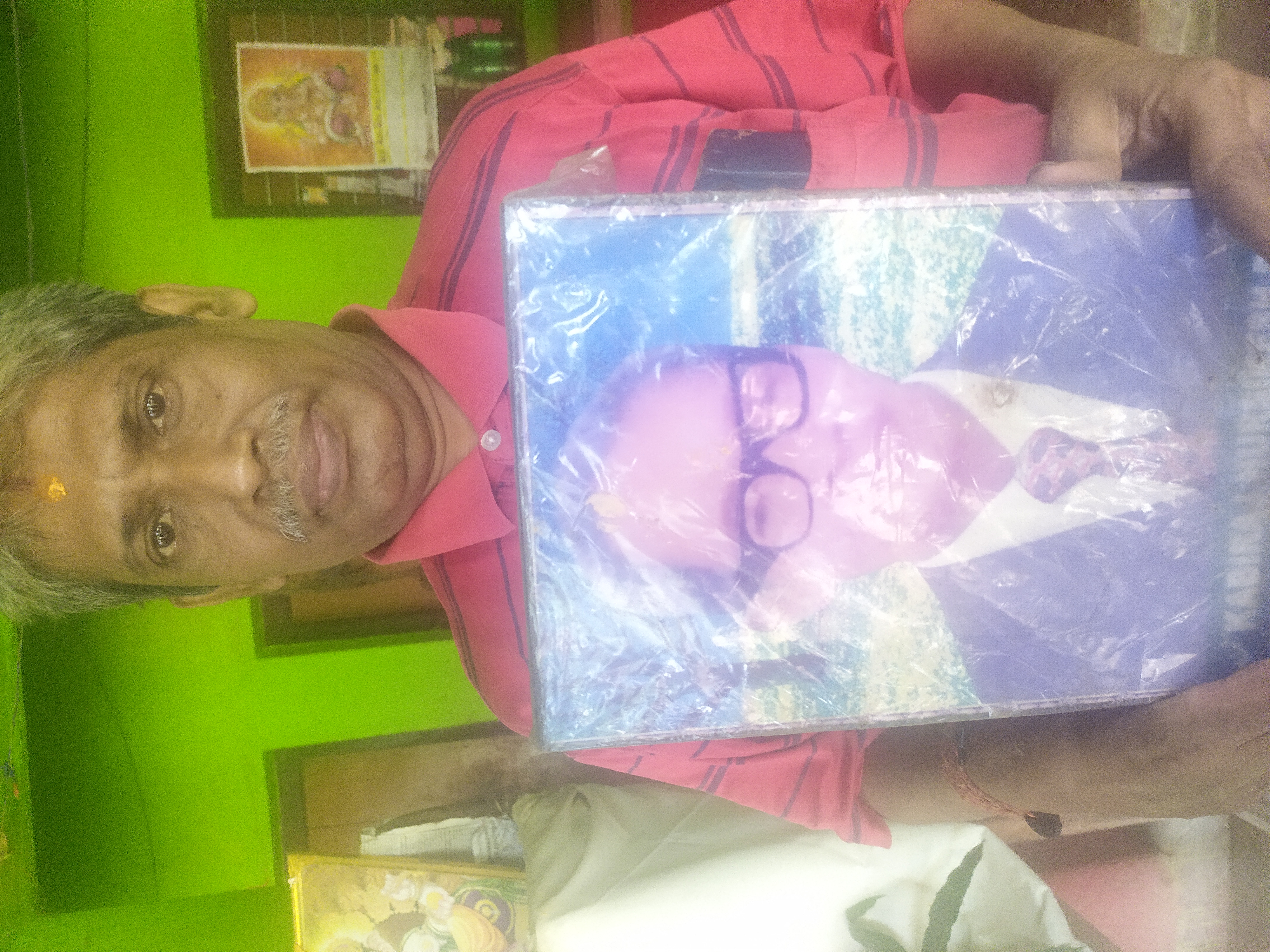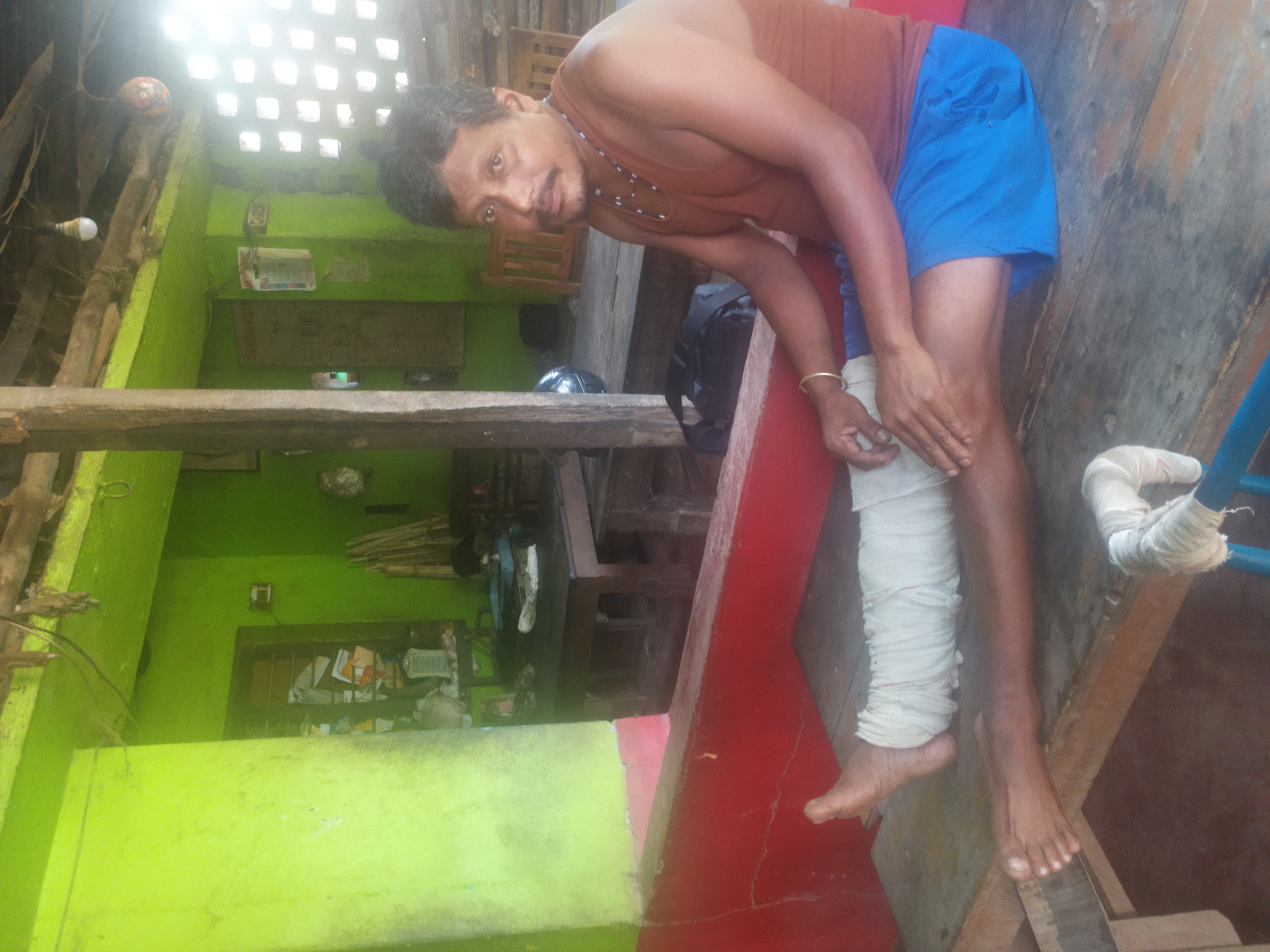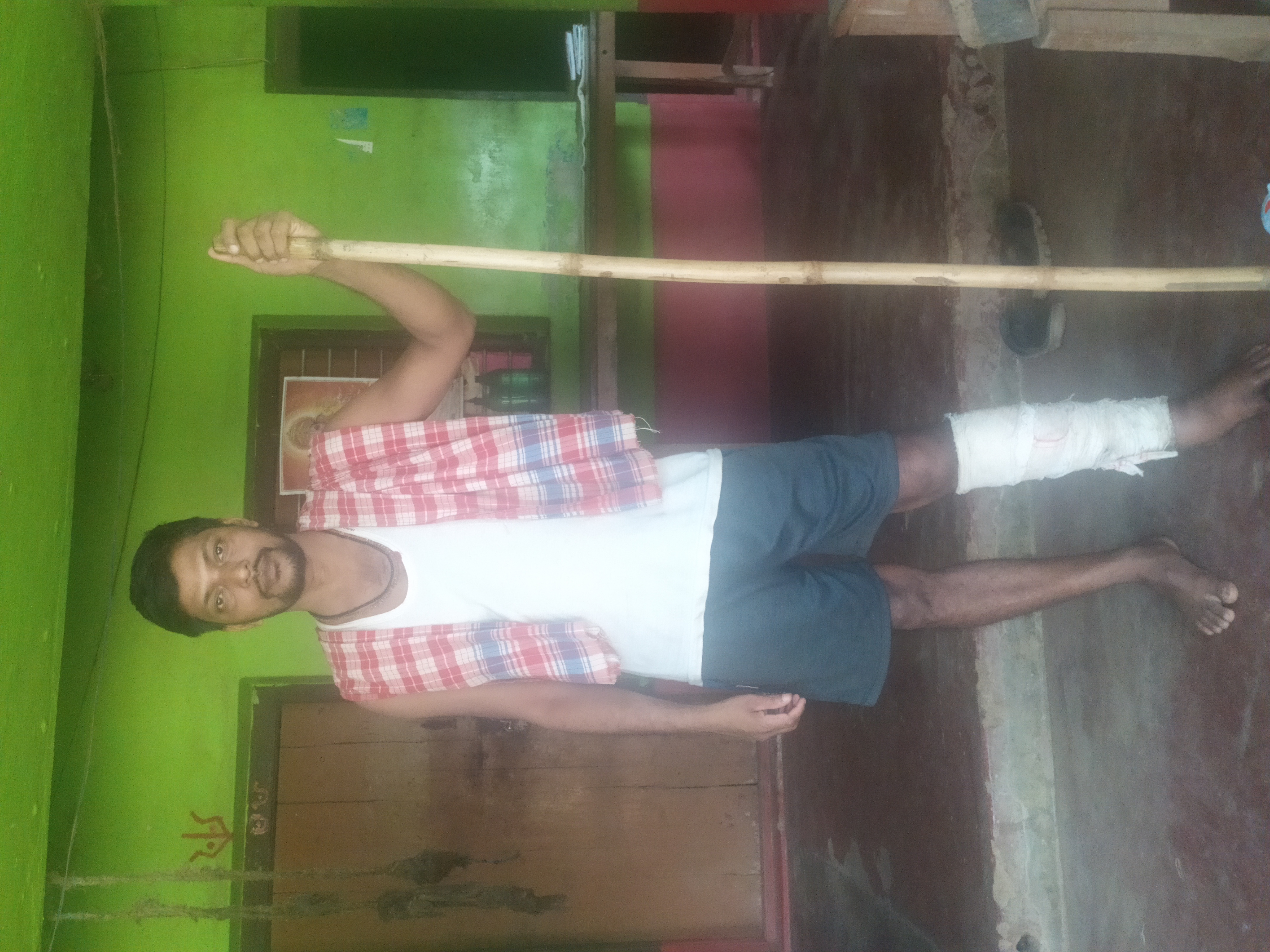Traditional bone setters of Kalupada
“Kalupada Seka” is a distinct traditional healing practice preserved and carried forward by a dozen of bone-setter families of Kalupada, a quaint village near Chilika Lake, explicates Dr Sanjeeta Nayak
No steel rods, no screws and k-wiring, no invasive surgery! Short bamboo sticks, cloth bandages and the black herbal concoction massages are what these traditional bone setters use as tools to treat fractures and broken bones, further complemented by heat oil massage! This immensely popular traditional, alternate healing practice is famously branded as “Kalupada Seka Chikischa” in Odisha.
traditional bone setters use as tools to treat fractures and broken bones, further complemented by heat oil massage! This immensely popular traditional, alternate healing practice is famously branded as “Kalupada Seka Chikischa” in Odisha.
India’s most ancient traditional healing system can be traced to Rudra whose healing hands could heal both human and animals. In early Vedic literature, he is credited to be the knower of thousand remedies and as the healer of healers. Subsequently, sage Agastya became the wellspring of traditional Siddha form of treatment in peninsular India while Ashwini Kumaras were accorded much honor for their healing prowess in Northern region. Ancient Indian healing system paid much emphasis to treatment of Marma. Marma means a junction on body where two or more types of tissues meet, such as muscles, veins, ligaments bones or joints. Dhanantwari is credited with being the founder of Ayurveda and Shrushuta, said to be in his disciple tradition, enumerated 107 marma points and their healing methods.
Marma Chikischa involves treatments such as Swedana, Abhyanga, besides using bolus of slightly fried herbs tied in a cloth, heated in medicinal oil and placed on the affected part, later followed by specific massage. This traditional healing method with area specific minimal variations have been practiced by Vaidyas or traditional healers since ancient times in Indian subcontinent. One such healing tradition dealing with bone fractures, pain in muscles and joints due to postural issues or injury is popular with the name of “Kalupada Seka” in coastal regions of Odisha.
Bone setters of Kalupada deal with two ailments: Pain relief and bone setting. They treat lumber pain, neck and shoulder pain, sciatica pain, muscle spasm, tennis elbow, pain in joints of arthritis patients and frozen shoulder. They also treat to cure bone fractures and bone dislocations in almost any part of the body.
Kalupada Seka relates to its place of origin- a village named Kalupada on the northern fringe of Chilika Lake. For a dozen traditional bone setter families from this village, now spread to other locations across Odisha, this traditional healing is their family profession of serving people, raising hope against hope; and bring smile to ailing patients. The knowledge and techniques are kept secret and passed on to next generation family members by oral tradition. “Patients throng this place both in post-fracture stages for bone setting and in post-operative stage after the bandages are removed but the pain persists,” says Manu Das. “This is when the heat massage therapy helps reduce stiffness of marmas in muscles and joints resulting in increased flexibility and reduced pain.”
 “I am the seventh generation bone setter in my family. Bone setting is our traditional profession. After me my sons who are now being trained will take over. We are in this since the cowry days,” says 65 year old vaidya Arun Das referring to an era when cowry was used as money.
“I am the seventh generation bone setter in my family. Bone setting is our traditional profession. After me my sons who are now being trained will take over. We are in this since the cowry days,” says 65 year old vaidya Arun Das referring to an era when cowry was used as money.
People from far and near, even many from neighboring states of Andhra Pradesh, Chattisgarh, Jharkhand and West Bengal, come to this place for treatment. Usually it takes around 45 days to undergo fracture treatment for the bones to set. Patients live in this place for the entire duration of treatment in rented rooms with attendants provided by the healers at nominal price. They have the option to cook their own food, or buy it from the local market. Vaidya Aruna Das of Hrushikesh Bone Fracture Clinic has nearly 100 rooms he lets out to the patients.
The treatment usually starts after a diagnosis by the chief of the family. He makes an assessment by gentle touching and locating the extent of the fracture and broken bone in the area of the injury. “Earlier we used our palms to pin point the location, nature of fracture. However, there are a number of x-ray outlets operating presently in the local market making the cross verification of assessment part as well as healing stage easier.” Says Arun. Most of the bone setters have X-Ray units which they use to cross check their diagnosis and healing.
Unlike modern orthopedic practice, these healers do not apply force on dislocated bones to bring it back to its right place. They do that by gentle patting of the affected parts. Once the area is identified, they apply herbal poultice spread on a long bandage wrapped around the broken limb. The wrapping in simple fracture takes not more than 10 minutes, but multiple fracture cases demand more time. Herbal paste acts as an anti-inflammatory agent reducing pain and swelling. In cases such as fracture in arm does not require to stay with healers for the entire duration of treatment. They are sent back with a sling around the neck after the bandage and advised to use the herbal oil prepared by the healers for the first fortnight on the bandage after which a fresh bandage is applied. After the next 15 days the patient can remove the bandage on his own.
Arun explains, “For other serious fractures, every fourth-day the bandage needs to be changed after dipping in fresh herbal solution. It depends on the seriousness of the damage as to the frequency of changing the bandage. They use bamboo sticks under the bandage as support for correct alignment of bone.
 For those patients, who come from far-flung areas and not having very serious complications, we give the herbal mixture powder that can be applied on the limbs at home after making solution. Roughly, 100 grams of powder is used in every bandage. The powder is boiled with castor oil and cow milk and is allowed to cool before being applied on the affected limb.” Roughly, ten types of herbs are mixed to prepare the solution.
For those patients, who come from far-flung areas and not having very serious complications, we give the herbal mixture powder that can be applied on the limbs at home after making solution. Roughly, 100 grams of powder is used in every bandage. The powder is boiled with castor oil and cow milk and is allowed to cool before being applied on the affected limb.” Roughly, ten types of herbs are mixed to prepare the solution.
“Earlier we used to get our herbal requirements met from nearby areas and forest close to our village. Now, the vegetation has vanished, so also the forest. We have to employ skilled assistant to visit distant forest areas in Nayagarh, Dasapalla in search and collection of herbs. The collection of herbs traditionally was done in auspicious days like the day of Sankranti, Purnima etc. After locating the herb, a Vaidya would pay respect, invoke divine healing properties of that herb and, then, collect it. This practice is seldom followed now a days. We even have to rely on outsourcing,” rues Arun.
vegetation has vanished, so also the forest. We have to employ skilled assistant to visit distant forest areas in Nayagarh, Dasapalla in search and collection of herbs. The collection of herbs traditionally was done in auspicious days like the day of Sankranti, Purnima etc. After locating the herb, a Vaidya would pay respect, invoke divine healing properties of that herb and, then, collect it. This practice is seldom followed now a days. We even have to rely on outsourcing,” rues Arun.
In traditional healing, the practice of invoking a specific ancient master as well as invoking the inherent properties (gunas) of the herbs before they are to be utilized in preparing mixtures or remedies is prevalent to this day. The healing properties of the herbs are said to manifest at specific time periods. Each step of the process is carried out in accordance with specificity of time adhering to specific “tithi” or lunar day and “paksha” or fortnight. It is worth wondering as to how without modern extraction, microscopy and chemico-analysis methods, these healers understood this bit of herb potency so beautifully!
The Oral tradition of knowledge flowing through generations in families with vitiating and unique tomes which can give an effective alternative for the disease conditions. Disease simply means not at ease, hence, to realign and actualize that ease for the balanced function of the body is the mainstay of any form of treatment. This principle or adage can be traced back to masters like Chyavana, Dhanwanthari and even Atri lineages.
Few healers had tried to plant and cultivate medicinal plants they needed on their fields, however, the outcome was not that encouraging as the cultivated ones were not as effective as the ones that naturally grew in forest.
For relief in cases such as lumber pain, neck and shoulder pain, sciatica pain, muscle spasm, tennis elbow, pain in joints of arthritis patients and frozen shoulder, heat massage is applied. Affected area receives a castor oil massage first. Then a piece of thick castor-oil-soaked cloth is spread over the area, followed by covering it with herbal solutions. Iron rod, after heated on charcoal fire is gentle rolled over the oiled cloth for 20-25 minutes in one session of massage. Number of massages is decided by the healer. This process of treatment has proved to be very effective and can lead to amazing result.
“We revere Dhanwantari, the famed ancient healer, and pray to him for complete healing of patients who come to us for relief,” says Arun underlining the ancestry of their craft.
These practitioners are not recognized by modern medical fraternity, but the healing they bring to fractures are almost fantastic. Many researcher from this field who have made attempts to study this alternative healing system are quite impressed by the result. Attempts to exploit this system and the skills of these healers for pure commercial benefits has not succeeded so far as these bone setters prefer to confine their knowledge within the family, and carry it forward purely as their family tradition.